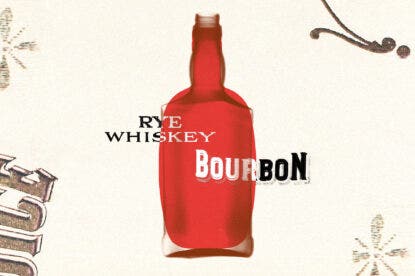Cuvée is a term that appears on many wine labels but can have multiple meanings. One, commonly used in sparkling wine production, refers to the early stages of extracting juice from grapes.
“It’s our first cut from the press, the best juice,” says Zak Miller, sparkling winemaker for Domaine Carneros in California’s Napa Valley.
Also referred to as “free-run” juice, this first press is often the purest. It has fewer phenolics, higher acidity and lower pH. “The more you press, the more phenolics there are, and the heavier, more ‘pressier,’ the juice gets,” says Miller.
Those bitter, phenolic compounds and the weightiness that comes with later presses are usually less desirable in a classically delicate sparkling wine, like those crafted in the Champagne tradition.
“We use the term cuvée some…but usually we’ll just say ‘free-run juice,’ or ‘first cut,’ ” says Hugh Davies, president of Schramsberg Vineyards and Davies Vineyards. “They use [cuvée] more in French sparkling houses,” but he adds that the French term has multiple meanings that can become confusing.
Cuvée can also be a term synonymous with “blend.” There’s no legal definition in either the U.S. or France, Miller points out, so cuvée can stand in for any kind of combination in wine—vineyards, vintages or varieties. “We do a single vineyard, but off that vineyard we have both Chardonnay and Pinot Noir…to me, that’s still a cuvée,” says Miller.
The process of blending can be one of the most important parts of winemaking. “You can have an A+ lot, but there will be a block that can go in with that and round it out, add something extra, make it even better,” says Miller. The goal: to create a blend, or cuvée, whose sum is greater than its component parts. “The orchestra is always better than any one of the individual instruments,” he says.
Domaine Carneros was founded by the family behind Champagne Taittinger, and Miller says its French origin is one of the reasons the company opts for French terminology.
Davies points out that different Champagne houses sometimes refer to their best blends within the larger cuvée designation by even more specific terms, like tete de cuvée, prestige cuvée and grande cuvée.
“We make a blend [at Schramsberg] for our nonvintage brut, our Mirabelle, and a blend for our J. Schram, our ‘tete cuvée,’ if you will,” he says.
“[It] seems like, even in France, when we literally try to translate the word, it comes out different in different places,” he adds. “Sometimes, wine just isn’t that simple.”
Last Updated: June 6, 2023















